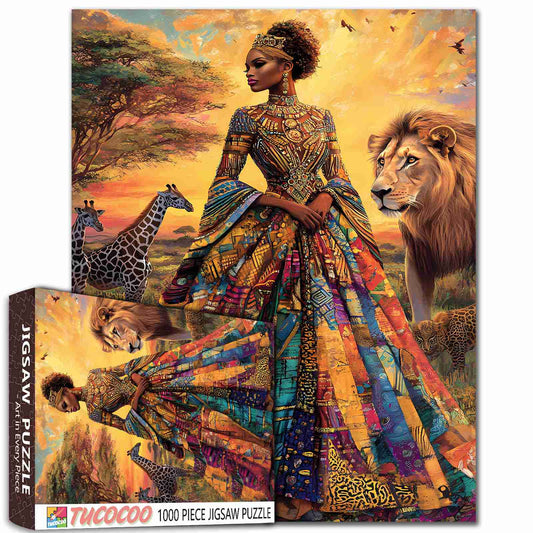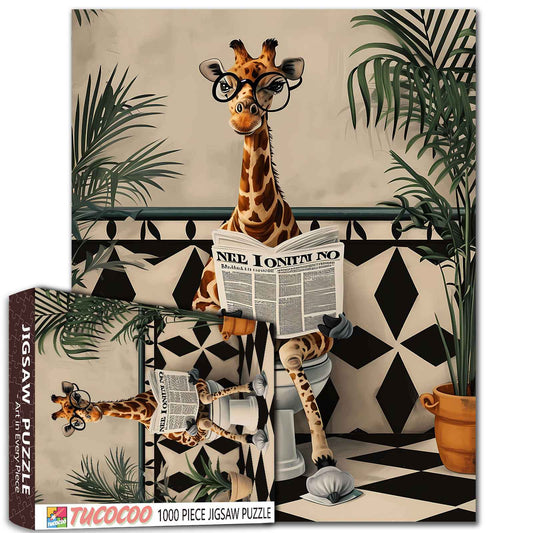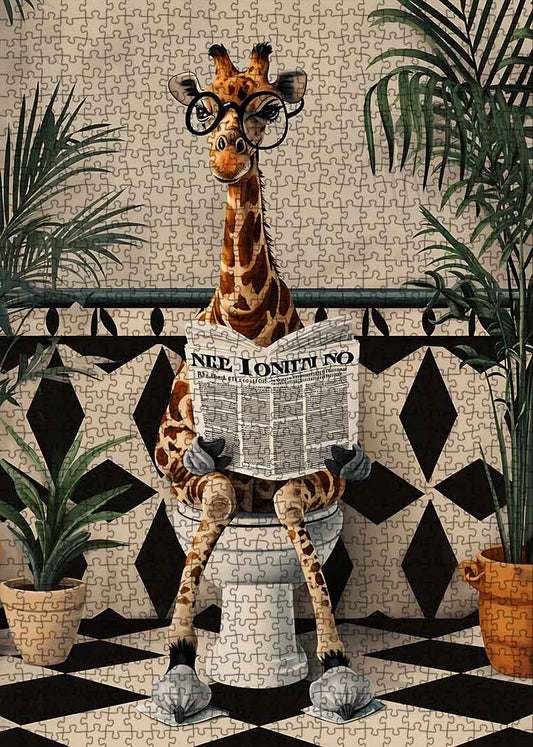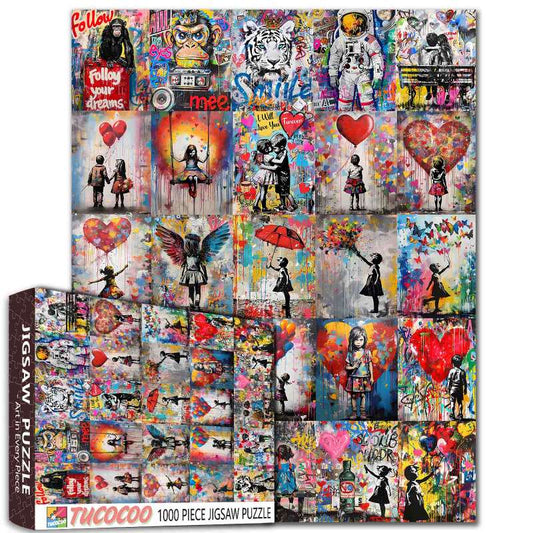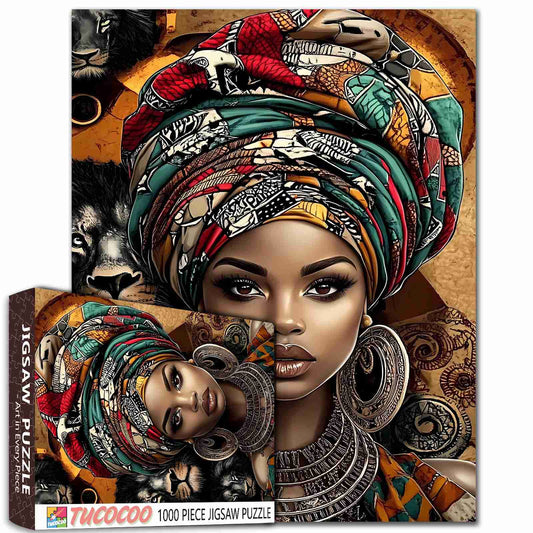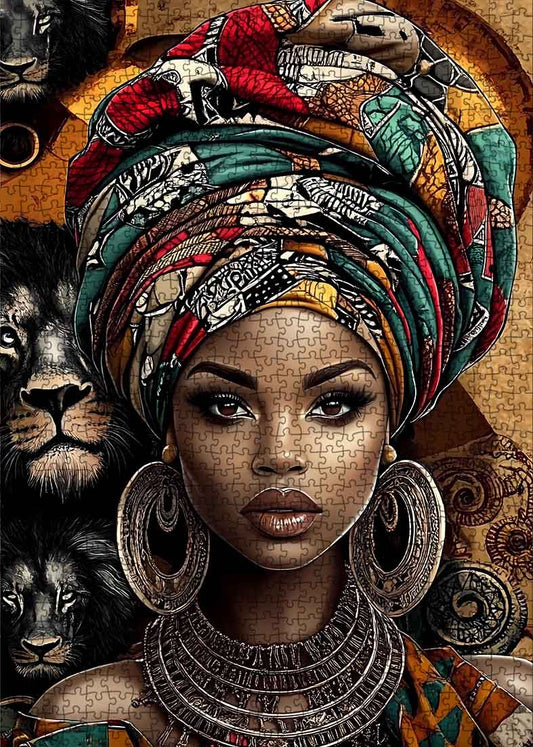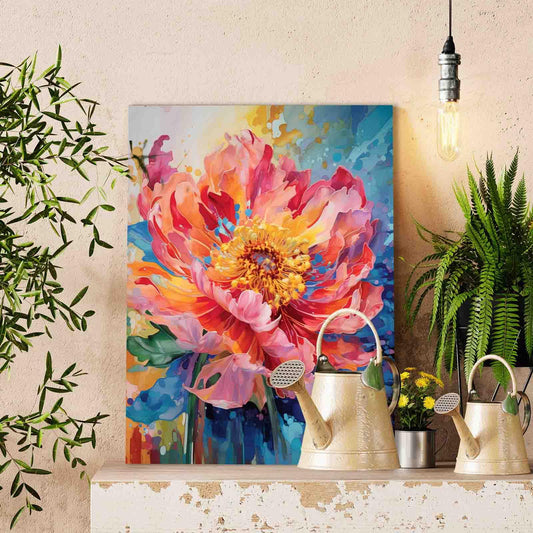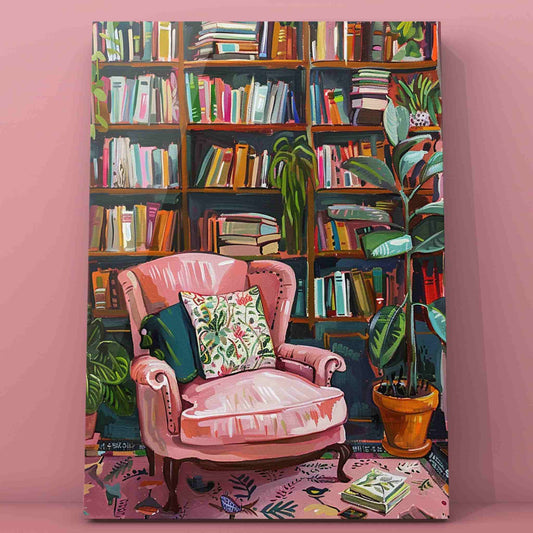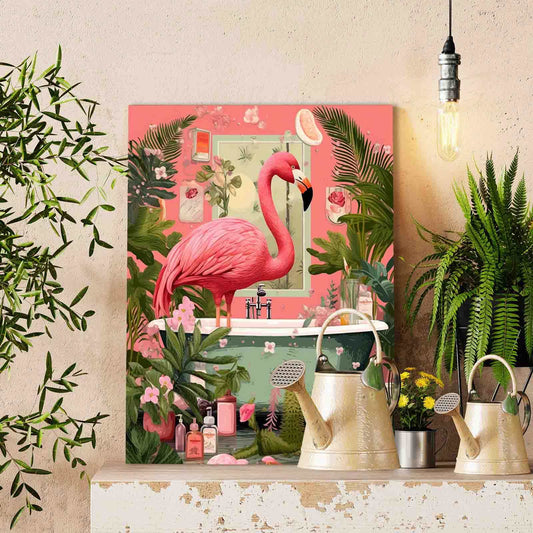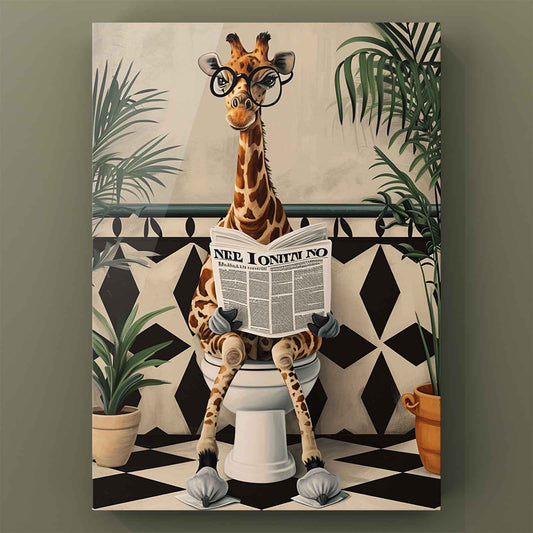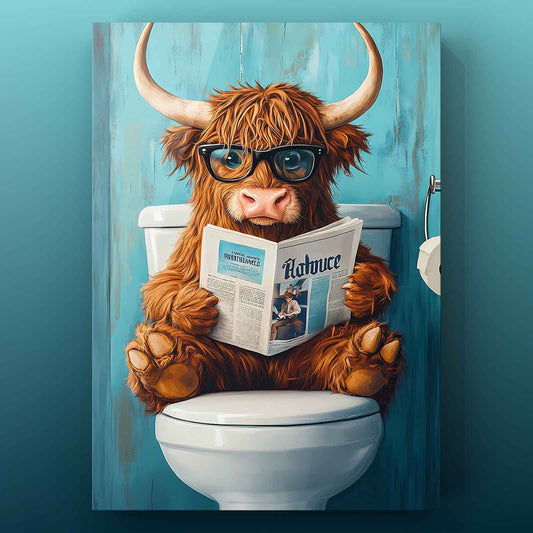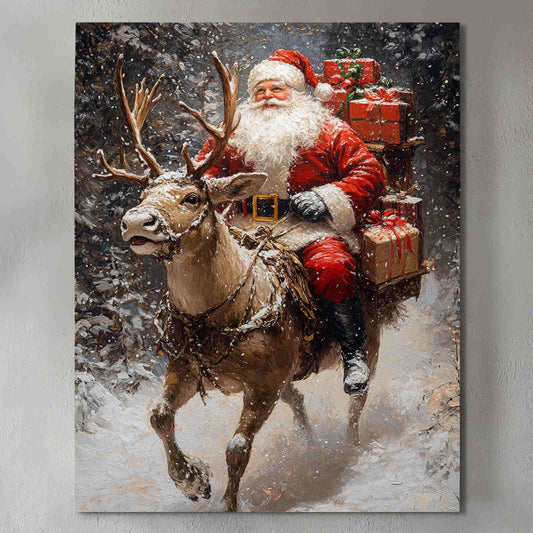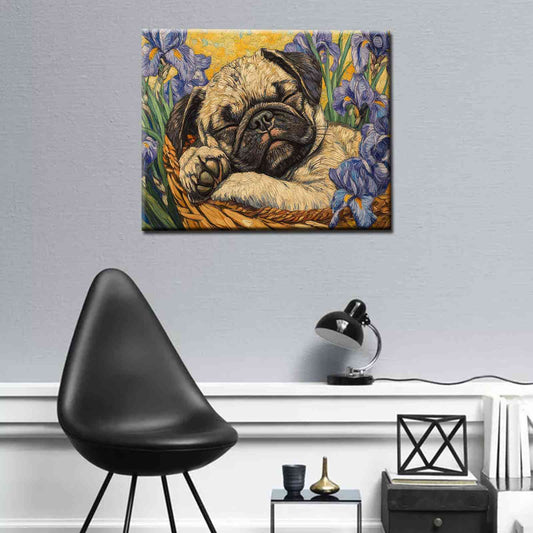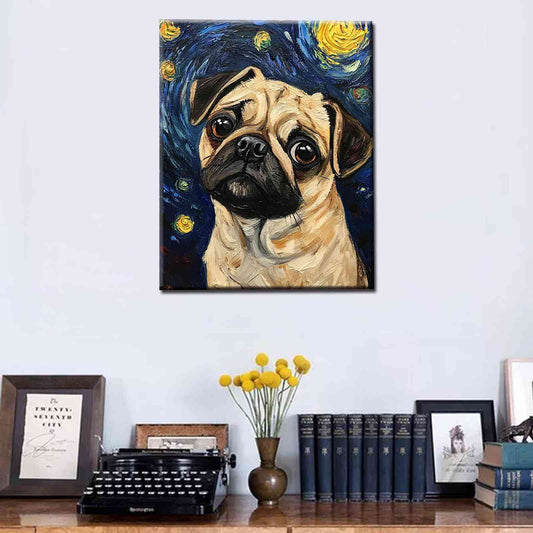
Vintage Artwork vs Modern Artwork Which Fits Your Style
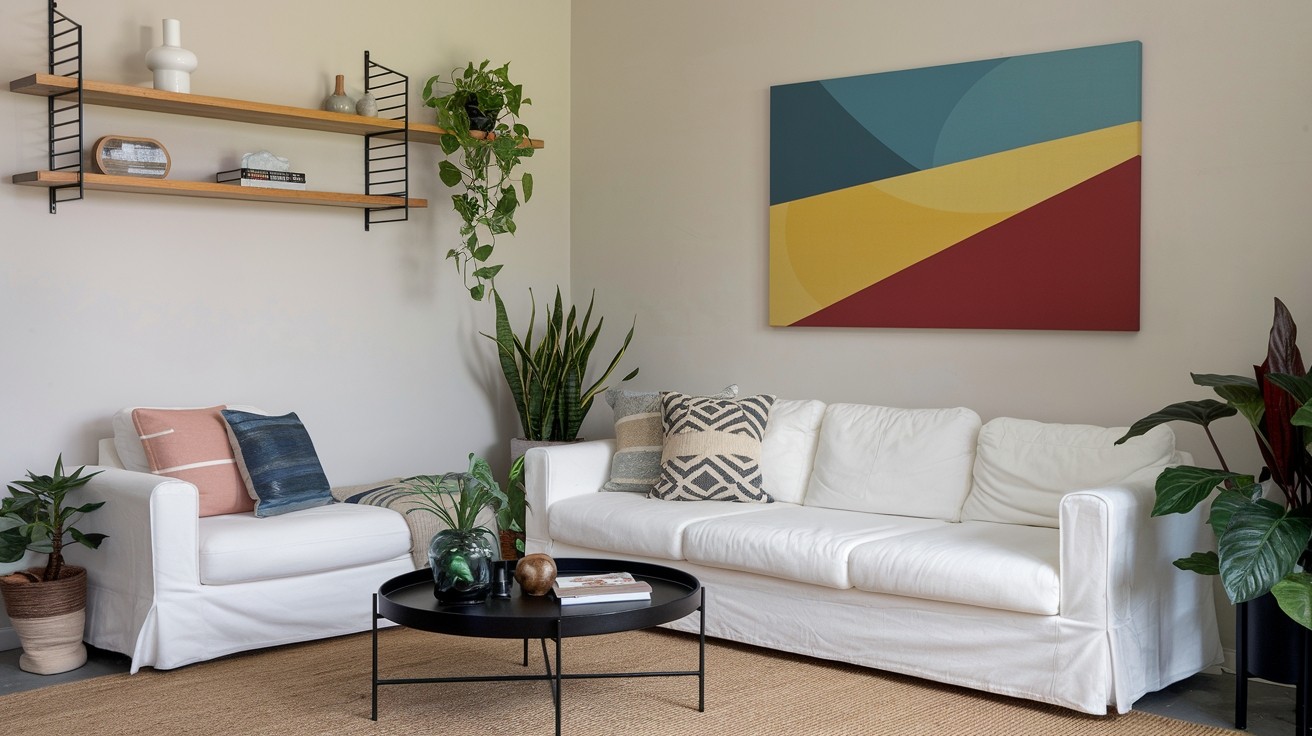
Choosing between vintage artwork and modern artwork can feel like stepping into two distinct worlds. Vintage artwork often evokes a sense of nostalgia and history, while modern art embraces bold creativity and innovation. Your decision goes beyond mere aesthetics—it’s about what aligns with your personal style and complements your space and lifestyle.
Did you know that your background and experiences shape how you interpret art? For example:
Experts tend to focus on composition, while others connect more deeply with the content.
Your lifestyle and environment influence how you engage with art.
Whether you’re captivated by the timeless charm of vintage artwork or the fresh appeal of modern pieces, the key is discovering what truly speaks to you. Dive into your preferences, and let your walls tell your unique story.
Key Takeaways
Vintage art shows history and old memories. It suits people who love classic looks.
Modern art focuses on bold ideas and new designs. It fits modern spaces with a fresh feel.
Think about your style and the mood you want when picking art for your home.
Combining vintage and modern art can make your decor interesting. Use neutral colors to keep it balanced.
Try different placements and frames to make your art stand out.
Understanding Vintage Artwork
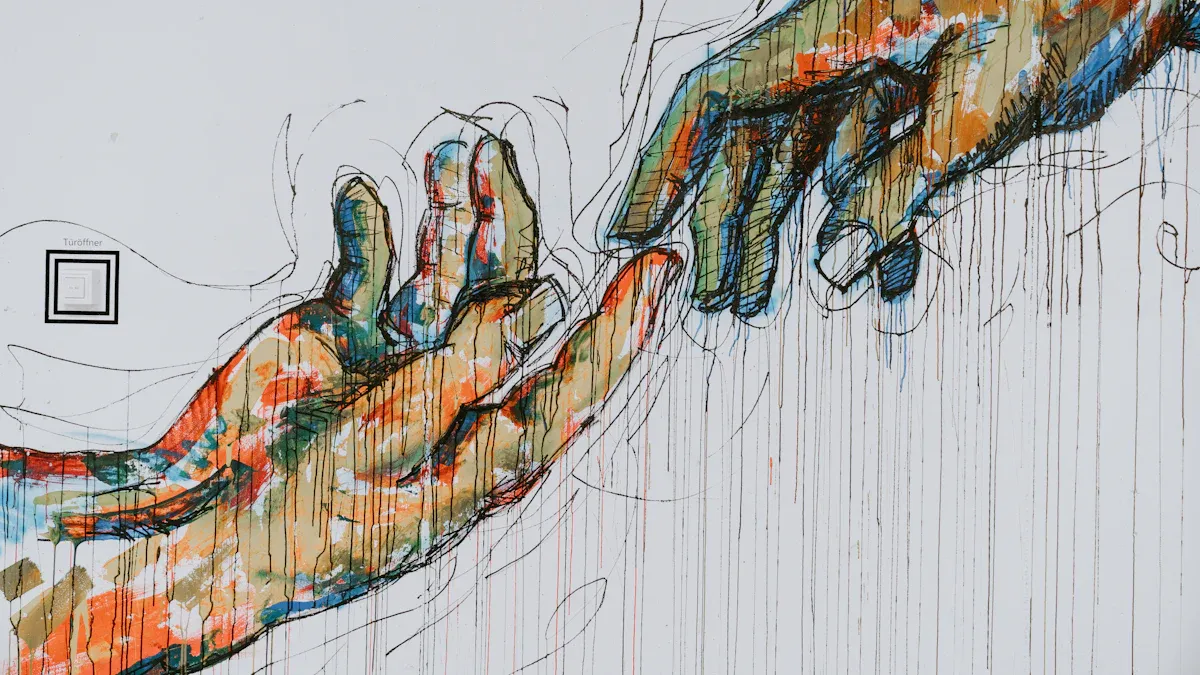
🖼️ What Defines Vintage Artwork?
Vintage artwork refers to pieces that reflect the styles, techniques, and cultural influences of past eras. These works often carry a sense of history and nostalgia, connecting you to the time they were created. Typically, vintage art includes pieces made before the mid-20th century, showcasing the craftsmanship and aesthetics of earlier periods. Museums and collectors often rely on provenance research to verify the origins of vintage pieces, ensuring their authenticity and rightful ownership. For example, institutions like the Virginia Museum of Fine Arts focus on identifying the history of artworks from critical periods, such as those affected by the Nazi era.
✨ Key Characteristics of Vintage Artwork
📜 Historical and Nostalgic Appeal
Vintage artwork often incorporates classical elements that resonate with historical significance. Artists like Jacques-Louis David used classical architecture and Roman legends to evoke ideals of Ancient Rome, creating a bridge between the past and contemporary society. These works invite you to explore the stories and cultural values of earlier times. Contextual information about the artists and their techniques can deepen your appreciation, making the experience more meaningful.
🎨 Traditional Techniques and Materials
The charm of vintage art lies in its use of traditional methods and materials. You’ll notice intricate detailing, warm tones, and handcrafted embellishments in many vintage prints. Common materials include wood for carved panels and aged finishes, as well as ceramics for decorative tiles and sculpted pottery. These elements give vintage artwork its timeless appeal, making it a perfect choice for those who value classic aesthetics.
🏛️ Popular Types of Vintage Artwork
🌟 Renaissance and Baroque Art
Renaissance and Baroque art are among the most celebrated styles of vintage artwork. Renaissance pieces focus on realism, harmony, and human emotion, while Baroque art emphasizes drama and grandeur. These styles often feature religious themes, mythological stories, and intricate compositions. They’re ideal if you love classic art that tells a powerful story.
🌀 Art Deco and Art Nouveau Styles
Art Deco and Art Nouveau bring a different flavor to vintage prints. Art Deco is known for its bold geometric patterns, rich colors, and luxurious materials. In contrast, Art Nouveau features flowing lines, floral motifs, and a focus on natural forms. Both styles offer unique ways to add elegance and sophistication to your space.
Incorporating Vintage Living Room Art
🖼️ Choosing Vintage Prints for Your Space
When picking vintage prints for your living room, think about the story you want your space to tell. Vintage artwork can bring a sense of history and charm that transforms your room into a cozy, inviting retreat. Start by considering the overall vibe of your living room. Do you want it to feel elegant, rustic, or eclectic? Once you’ve decided, look for prints that match that mood.
Layering materials is a great way to add depth to your art arrangement. For example, you could pair a vintage painting with a textured fabric backdrop or place it near a wooden accent piece. This approach prevents your display from looking flat and makes the artwork pop. Stick to a consistent color palette to ensure your vintage living room art blends seamlessly with your furniture and decor. A mix of statement pieces and subtle accents can create a balanced, cohesive look.
🖼️ Framing and Placement Tips
The right frame can elevate your vintage artwork and tie it into your living room’s design. Ornate gold or wooden frames work well for traditional styles, while simpler frames can modernize vintage prints without losing their charm. When choosing a frame, think about the colors and materials already present in your space.
Placement is just as important as framing. Hang your vintage living room art at eye level to make it the focal point of the room. If you’re creating a gallery wall, mix different sizes and shapes for visual interest. You can also lean smaller pieces on a shelf or mantel for a more casual, layered look. Don’t be afraid to experiment—sometimes, an unexpected arrangement can bring your space to life.
Tip: Use lighting to highlight your vintage prints. A well-placed spotlight or wall sconce can make the details of your artwork shine.
Exploring Modern Artwork
🖌️ What Defines Modern Artwork?
Modern artwork breaks away from traditional narratives and embraces experimentation. It focuses on abstraction, innovation, and self-expression. Unlike vintage art, which often reflects historical themes, modern art challenges conventions and explores new ideas. Art historians like H. Harvard Arnason explain that modern art evolved gradually, reflecting a shift in how artists approached their work. Ernst Gombrich adds that modern artists deliberately choose their styles, much like selecting wallpaper patterns, showcasing their self-awareness and creativity.
This type of art often feels bold and thought-provoking. It invites you to interpret its meaning based on your perspective, making it a deeply personal experience. Whether it’s a striking modern print or a minimalist sculpture, modern artwork encourages you to see the world differently.
✨ Key Characteristics of Modern Artwork
🎭 Abstract and Minimalist Designs
Modern art often features abstract and minimalist designs. These styles strip away unnecessary details, focusing on shapes, colors, and textures. Abstract pieces can evoke emotions without depicting specific objects, while minimalist designs create a sense of calm and simplicity. This approach makes modern prints perfect for contemporary spaces, where clean lines and open layouts dominate.
🌈 Use of Bold Colors and Innovative Materials
Bold colors and innovative materials define many modern artworks. Artists experiment with vibrant palettes to create striking visual effects. They also use unconventional materials like recycled items, natural fibers, and mixed media. Eco-conscious wall art, crafted from sustainable materials, has become increasingly popular among homeowners who value sustainability. These elements make modern prints stand out, adding a unique touch to your space.
🖼️ Popular Types of Modern Artwork
🎨 Abstract Expressionism
Abstract Expressionism is one of the most iconic styles of modern art. It emphasizes spontaneity and emotion, often through bold brushstrokes and dynamic compositions. This style allows you to connect with the artist’s feelings and intentions, making each piece a unique experience. Oversized abstract wall art has become a favorite for contemporary homes, adding sophistication and drama to interiors.
💻 Digital and Mixed Media Art
Digital and mixed media art represent the cutting edge of modern creativity. Digital art uses technology to create stunning visuals, while mixed media combines various materials for a layered effect. These styles offer endless possibilities, from vibrant modern prints to interactive installations. They reflect the growing influence of technology in the art world and provide exciting options for your home decor.
Tip: When choosing modern prints, consider how their colors and textures complement your room’s design. A well-chosen piece can transform your space into a modern masterpiece.
Using Modern Living Room Art
🎨 Selecting Modern Prints for Contemporary Spaces
Modern prints can completely transform your living room into a vibrant and stylish space. They’re not just decorations; they’re statements. When choosing modern living room art, think about what speaks to you. Do you love bold abstract designs or minimalist pieces? Abstract wall art, for instance, can add a splash of personality and turn your walls into a stage for creativity. It’s not just about filling empty spaces—it’s about creating a mood.
To make the right choice, consider the colors and themes in your room. A bright, colorful print can energize a neutral space, while a monochromatic piece might bring balance to a room with bold furniture. Modern prints often work best when they complement your existing decor without overwhelming it. Remember, the goal is to enhance your space, not clutter it.
Tip: Use one large statement piece or a curated set of smaller prints to create a cohesive look. This approach keeps your space visually appealing and organized.
🏡 Styling Tips for Modern Decor
Styling modern living room art is all about placement and harmony. Start by identifying the focal point of your room. This could be above the sofa, near a fireplace, or even on a blank wall that needs some love. Once you’ve picked the spot, hang your art at eye level for maximum impact. If you’re working with multiple pieces, try arranging them in a grid or gallery wall for a polished look.
Lighting plays a huge role in showcasing modern prints. Use spotlights or wall sconces to highlight the textures and colors of your art. This not only draws attention but also adds depth to your room. Don’t forget to experiment with frames. Sleek, simple frames often work best for modern styles, but you can also go frameless for a clean, contemporary vibe.
Note: Modern living room art thrives on simplicity. Avoid overcrowding your walls. Let each piece breathe and shine on its own.
Modern prints bring more than just beauty to your home. They evoke emotions, spark conversations, and reflect your personal style. With the right selection and styling, your living room can become a masterpiece in itself.
Factors to Consider When Choosing Artwork
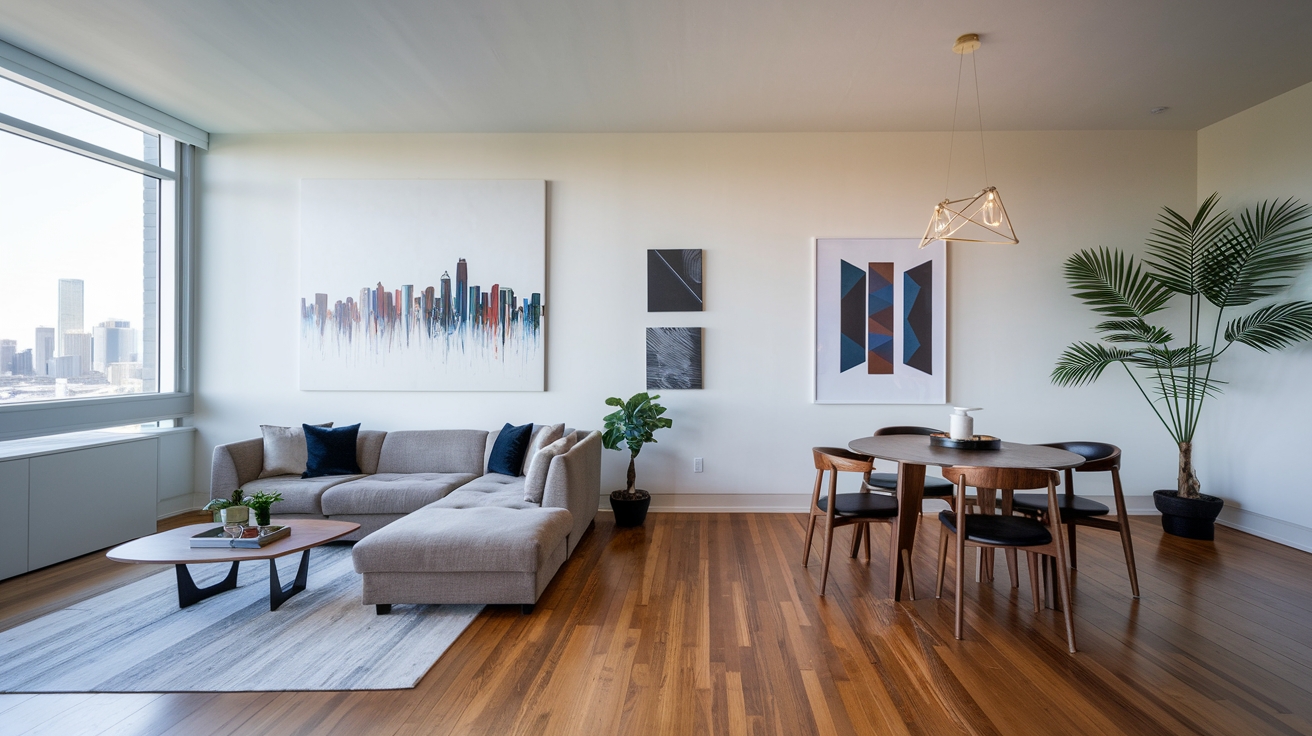
🏠 Space and Decor Theme
📏 Matching Artwork to Room Size and Layout
The size and layout of your room play a big role in choosing the right art. A large, bold piece can dominate a spacious wall, while smaller prints work better in cozy corners. If your room has high ceilings, vertical artwork can draw the eye upward, adding a sense of grandeur. For narrow spaces, horizontal pieces or panoramic photography can create a sense of balance. Always measure your wall space before buying art to ensure it fits perfectly.
🛋️ Complementing Existing Furniture and Decor
Your artwork should harmonize with your furniture and decor. If your room features modern furniture, abstract or minimalist styles can enhance the contemporary vibe. For vintage-inspired spaces, classic photography or traditional paintings can tie everything together. Pay attention to the colors in your room. Artwork that echoes these tones can create a cohesive look, while contrasting colors can add a pop of excitement.
💖 Personal Taste and Emotional Connection
🧠 Identifying What Resonates with You
Art is deeply personal. Think about what draws you in—whether it’s a serene landscape, a vibrant abstract, or a striking piece of photography. Studies like those by Di Dio et al. (2015) and Freedberg and Gallese (2007) show that emotional responses play a huge role in how we connect with art. Dynamic pieces often evoke strong feelings, making them memorable additions to your space.
Evidence |
Description |
|---|---|
Di Dio et al., 2015 |
Neuroimaging studies show that aesthetic judgment is influenced by motor system activation, indicating a connection between emotional responses and artwork. |
Freedberg and Gallese, 2007 |
Dynamic artworks engage motor systems through features that represent actions and emotions, highlighting the emotional connection in art appreciation. |
🌟 Considering the Mood You Want to Create
Art sets the tone for your room. A calming landscape can make your living room feel like a retreat, while bold, colorful photography can energize the space. The Aesthetic Triad Model suggests that sensory, emotional, and knowledge systems shape how we experience art. This means the mood you want to create should guide your choices. For example, soft tones and flowing lines can bring tranquility, while sharp contrasts and vibrant hues can spark creativity.
💡 Practical Considerations
💰 Budget and Investment Value
Art doesn’t have to break the bank. Set a budget that works for you and explore options like prints or photography, which often cost less than original pieces. If you’re looking for investment value, research artists whose work appreciates over time. Remember, the right piece doesn’t just add beauty—it can also be a smart financial choice.
🧼 Maintenance and Longevity
Think about how much care your artwork will need. Photography and prints often require less maintenance than oil paintings or mixed media pieces. Consider the environment too. High humidity or direct sunlight can damage certain materials. Choose pieces that fit your lifestyle and ensure they’ll last for years to come.
Tips for Mixing Vintage and Modern Artwork
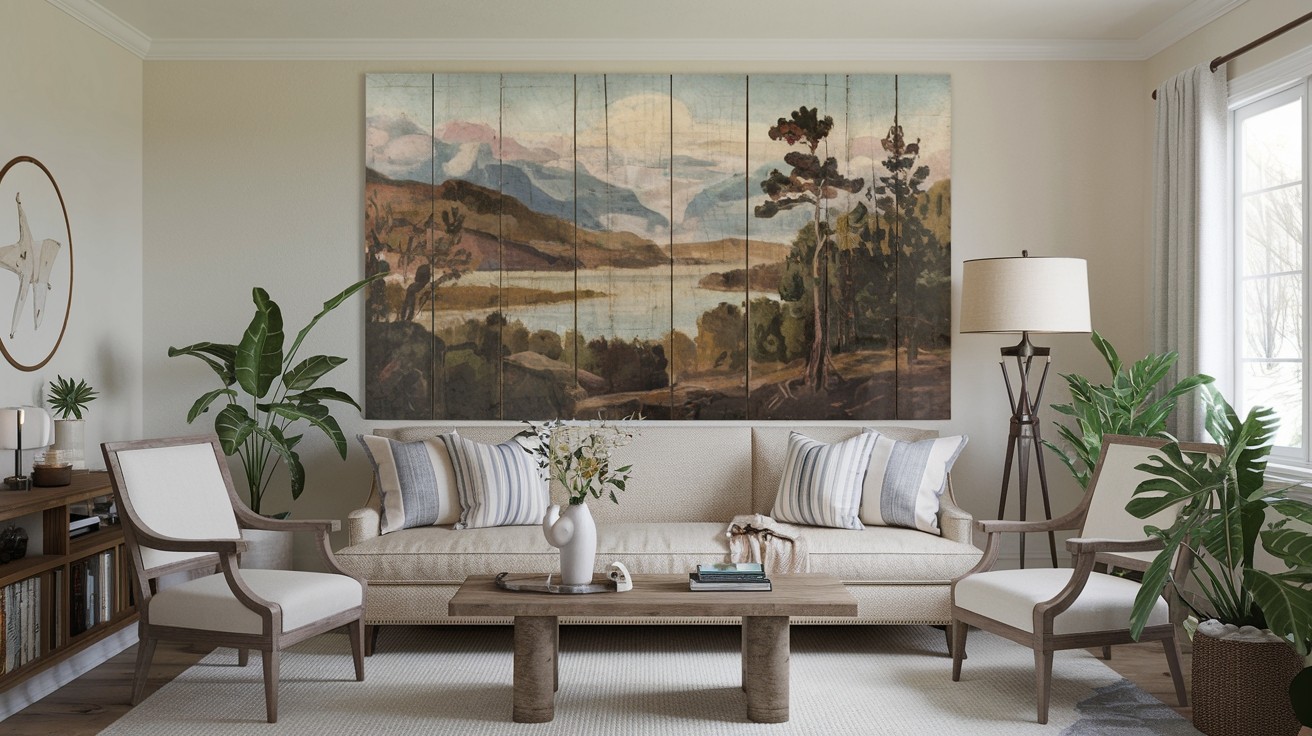
⚖️ Finding a Balance
🎨 Using a Neutral Color Palette
A neutral color palette can work wonders when blending vintage and modern styles. It creates a timeless and sophisticated look, making it easier to harmonize different pieces. Neutral tones like beige, gray, and white act as a versatile backdrop, allowing you to layer accent colors or textures without overwhelming the space. This approach also promotes a serene atmosphere, perfect for relaxing areas like living rooms or bedrooms.
For example, pairing a vintage oil painting with a modern abstract print becomes seamless when both pieces share complementary neutral tones. The result? A cohesive and calming space that feels both stylish and inviting.
🎯 Creating Focal Points
Focal points are essential for balancing vintage and modern artwork. They draw the eye and create visual interest. You can use a bold modern piece, like an oversized abstract print, as the centerpiece of your room. Surround it with smaller vintage accents, such as framed Art Nouveau sketches, to create a balanced aesthetic.
This strategy ensures that neither style overpowers the other. Instead, they work together to tell a story about your personal taste and creativity.
🖼️ Experimenting with Placement
🌀 Layering Styles in the Same Space
Layering different styles adds depth and dimension to your decor. Try combining materials like a vintage wooden frame with a sleek, frameless modern print. This contrast enhances the visual appeal of your space. For example, placing a reproduction of Van Gogh's "Starry Night" next to a minimalist digital artwork can create a striking juxtaposition.
Layering doesn’t just apply to walls. You can lean smaller vintage pieces on shelves alongside modern sculptures or vases. This approach keeps your decor dynamic and engaging.
🌟 Using Contrasts to Add Visual Interest
Contrasts make your space pop. Pair bold modern art with classic vintage pieces to create a dynamic look. For instance, a vibrant abstract painting can energize a room when placed near a tranquil Monet reproduction. This mix of styles keeps your decor fresh and exciting, reflecting your unique personality.
✨ Incorporating Personal Touches
🖌️ Adding Unique Pieces to Reflect Your Personality
Your artwork should tell your story. Include pieces that resonate with you, whether it’s a family heirloom or a modern print you fell in love with. Mixing personal items with vintage and modern styles adds authenticity to your space.
For example, a vintage map from your travels can sit alongside a contemporary geometric print. This combination not only looks great but also sparks conversations about your experiences and interests.
🔄 Rotating Artwork for a Fresh Look
Switching up your artwork keeps your space feeling new. Rotate pieces seasonally or whenever you want a change. For instance, you could display a vibrant modern print in summer and swap it for a cozy vintage landscape in winter. This simple trick breathes new life into your decor without requiring a complete overhaul.
Tip: Keep a few versatile frames on hand to make rotating your artwork quick and easy.
Choosing between vintage and modern art is all about finding what resonates with you. Vintage pieces bring history and nostalgia, while modern styles offer bold creativity and innovation. Each has its charm, but the key lies in how they fit your personal style and the vibe of your space.
Your connection to art evolves with time, reflecting your unique preferences. Experts highlight this dynamic relationship between personal style and artwork selection:
Key Insight |
Description |
|---|---|
Dynamic Style |
Defined as time-dependent motoric functions that influence the final artwork. |
Making Process |
Observed as an interplay of various actions, highlighting the connection between personal style and artwork selection. |
Don’t be afraid to mix and match. Experiment with both styles to create a balance that feels authentic to you. Let your walls tell a story that’s as unique as your personality.
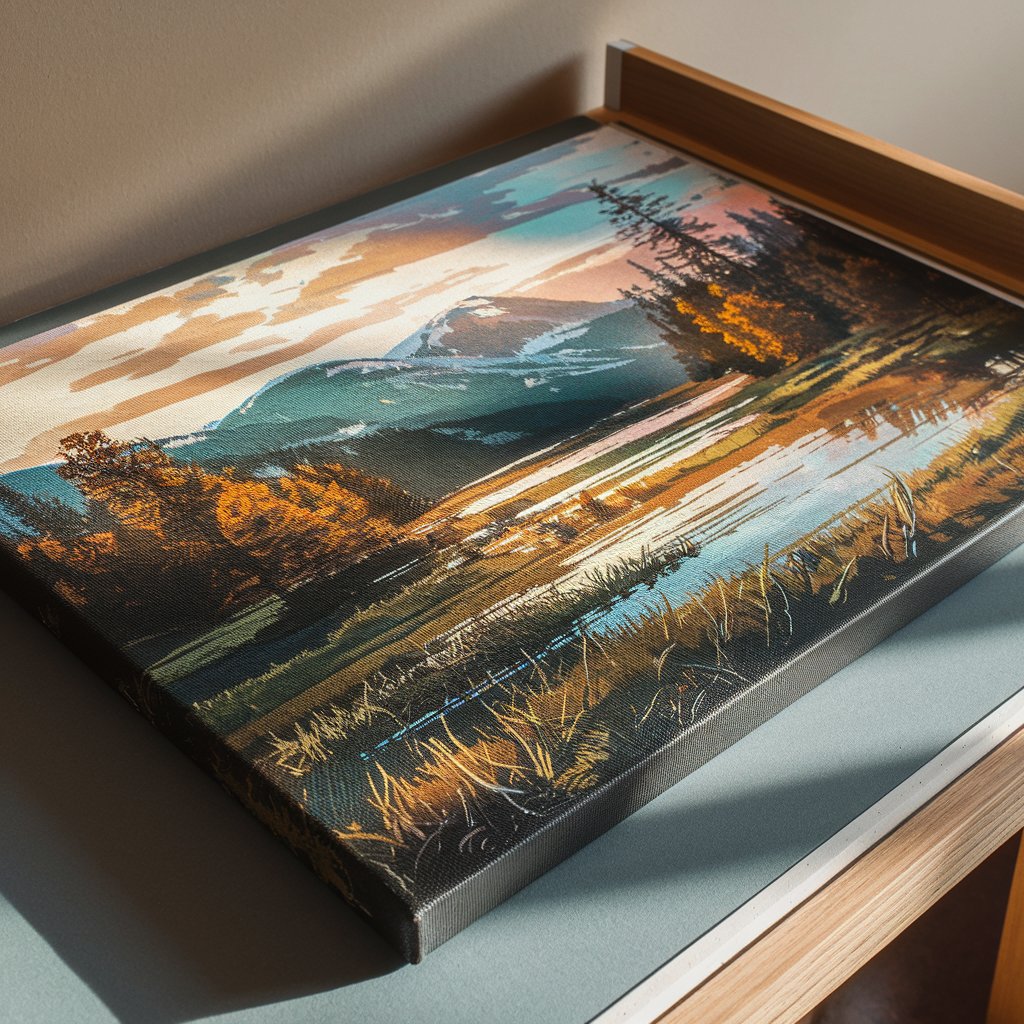
Tucocoo Custom Canvas Wall Art
FAQ
❓ What’s the main difference between vintage and modern artwork?
Vintage artwork reflects historical styles and traditional techniques, while modern art focuses on innovation and self-expression. Vintage pieces often feel nostalgic, while modern ones embrace bold designs and abstract ideas. Your choice depends on whether you prefer timeless charm or contemporary creativity.
❓ How do I decide which style fits my home?
Think about your decor theme and personal taste. Vintage art complements classic or rustic spaces, while modern pieces suit minimalist or contemporary designs. Consider the mood you want to create—cozy and nostalgic or sleek and vibrant.
❓ Can I mix vintage and modern artwork in one room?
Absolutely! Mixing styles adds depth and personality to your space. Use a neutral color palette to tie the pieces together. Create focal points by pairing bold modern art with subtle vintage accents. Experiment with placement to find a balance that works for you.
❓ Is modern artwork more expensive than vintage?
Not necessarily. Both styles offer options for every budget. Vintage prints or reproductions can be affordable, while original modern pieces might cost more. Research artists and materials to find pieces that fit your budget and offer long-term value.
❓ How do I maintain my artwork?
Keep your artwork away from direct sunlight and high humidity. Dust frames and surfaces regularly. For vintage pieces, consult a professional for preservation tips. Modern prints often require less maintenance but still benefit from proper care to ensure longevity.
Tip: Use UV-protective glass for framed pieces to prevent fading over time.

